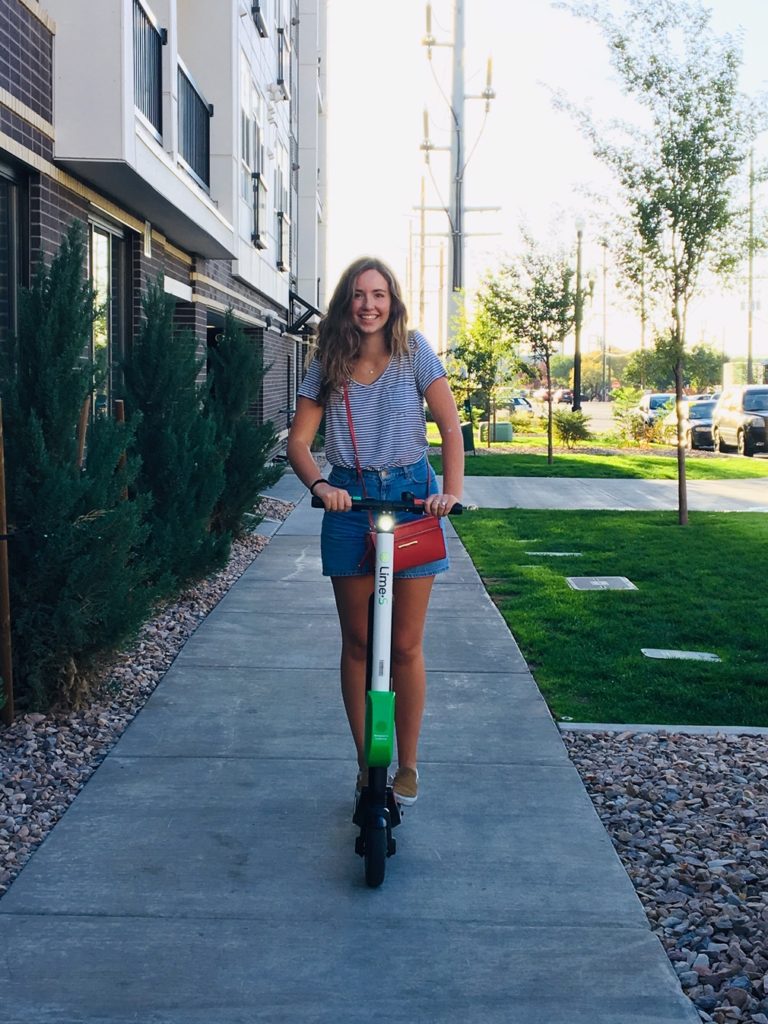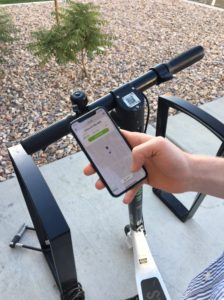
Salt Lake City welcomed a new addition to its streets this summer in the form of dockless scooters. Dockless scooters are electric scooters that don’t need to be returned to a charging station.
The scooters are rented through an app for a $1 fee and 15 cents per minute. Scooter battery is monitored through the app and lasts about 20 miles, according to Bird’s website, one of the scooter companies. Since the scooters arrival, Salt Lake City residents have voiced mixed opinions through email, survey and online comments.

The city requires the scooters to stay off the sidewalk, but few riders do, according to complaints submitted online to the city and provided by George Chapman, a Salt Lake City resident. Some city officials showed enthusiasm for the project, according to Jon Larsen, Salt Lake City’s transportation division director, though issues began to pile up in the months following the scooters’ introduction.
Scooter-related ER visits in Salt Lake City have risen 160 percent since July, according to Troy Madsen, an associate professor of surgery at the University of Utah. Madsen explained most injuries were caused by riders trying to catch themselves while falling, resulting in a break or dislocation.
“My simple advice would be to wear a helmet, slow down and always watch for potential obstacles. Even then, I think injuries are still going to happen,” Madsen said.
Abby Karren, a BYU junior from Sacramento, said the scooters were easy to control and maneuver but took some time to get used to. Once accustomed to using the scooters, Karren said she felt safe riding them.
Salt Lake City council members addressed complaints at a meeting on Sept. 20. Larsen and deputy director Jennifer McGrath shared plans to execute an education outreach program that would begin the first week of October.
The outreach program would send outreach workers onto the streets for three to four days to talk to users about safety and rules, hand out helmets and paint docking area lines.
“I’m sure we’re going to continue to see injuries from scooters regardless of an education outreach program. Like any form of transportation, there are risks involved. The hope with this would be to minimize injuries,” Madsen said.
Chapman, who wrote an opinion editorial against the scooters for the Deseret News, shared his concern for pedestrian safety. The scooters have a maximum speed of 15 to 20 mph, which he said he believes is too fast for sidewalks. Chapman said he doesn’t think the scooters need to be removed, just merely regulated.
“I don’t want an overreaction. I want five mph speed limits,” he wrote in an e-mail.
Larsen suggested creating lanes based on speed, with the bike lane being a medium speed lane that would be used for bikes, scooters and skateboards, among others.
The complaints are being taken seriously by city officials as they work to integrate the scooters into the city’s transportation system. Their goal is to do so without jeopardizing the safety of residents, according to Larsen.

The scooters help with getting people the last mile — a term used to mean the distance from a transportation hub to a person’s final destination, according to Larsen.
Officials in nearby cities, like Provo, are taking notice of the scooters increasing popularity in Salt Lake City, according to Larsen.
“Now that Provo has a legitimate and reliable rapid transit lane that connects BYU to downtown Provo and other retail corridors, it is important that we assist transit riders to reach their final destination in an efficient, cost-effective manner,” said Chad Thomas, business development coordinator for downtown Provo.
Thomas said Provo is looking for alternatives to help with public transportation like scooters and bikes. E-bikes, similar to e-scooters, have already been in circulation throughout Salt Lake City.
“The city is currently exploring bike-share opportunities. Most bike-share companies now have an e-scooter component and if the provider felt e-scooters would be successful in Provo, we would be open to exploring that possibility,” Thomas said.




